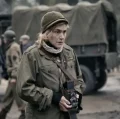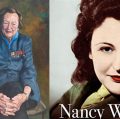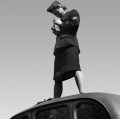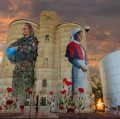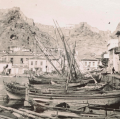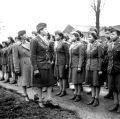January 27 marks the 76th anniversary of the liberation of Auschwitz-Birkenau and the following article was the Sydney Morning Herald. Written by By Jacqueline Maley and Rob Harris
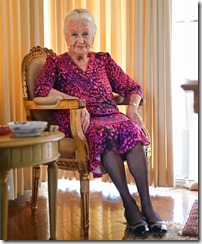 Olga Horak is 94 and a half. She is specific about the half-year, because at her age, it matters, and all those years are a testament to her great achievement: survival. Mrs Horak is a Czech-born Jewish Holocaust survivor, or as she puts it, a “graduate of the Holocaust”.
Olga Horak is 94 and a half. She is specific about the half-year, because at her age, it matters, and all those years are a testament to her great achievement: survival. Mrs Horak is a Czech-born Jewish Holocaust survivor, or as she puts it, a “graduate of the Holocaust”.
She was interned in five camps during World War II, including Auschwitz and Bergen-Belsen, from which she was liberated in 1945 at the age of 18. She lost her entire family in the camps, including her mother, most tragically, on the day of their liberation. “She collapsed and was taken away – possibly taken to a pit where the bodies were taken to,” Mrs Horak said. “This was three weeks before the end of the war. This is my story.”
Mrs Horak will tell her story during a commemoration of International Holocaust Remembrance Day on Wednesday, in honour of the 6 million murdered by the Nazis. The day marks the liberation of Auschwitz on January 27, 1945.
For the first time the commemoration will be held virtually and Australia-wide, with a pre-recorded message from Mrs Horak.
Other speakers include Prime Minister Scott Morrison, Treasurer Josh Frydenberg, Senator Penny Wong and former High Court judge Michael Kirby.
To mark the day, the federal government will commit $750,000 towards the establishment of a Holocaust museum in Canberra, expanding the National Jewish Memorial Centre, which houses a small museum and an art gallery.
“Auschwitz was not conceived in heaven made by God. It was carefully planned by people for people,” Mrs Horak will tell the virtual guests on Wednesday.
“It was a place carefully designed by so-called cultured people.”
Speaking from her Dover Heights home on Tuesday, Mrs Horak mentioned the extreme heat of the day but said she didn’t mind it.
“I enjoy the beautiful summer. I am not concerned,” she said.
“There is no other place in the world like Australia, which I call paradise.”
Mrs Horak works three days a week as a volunteer guide at the Sydney Holocaust Museum but is “not worried” she will catch COVID-19.
“So far, so good. I am not sick,” she said.
She still drives and is active, although last year she had to undergo three back surgeries, a painful physical reminder of her Holocaust experience – during her time in Kurzbach, a satellite concentration camp of Auschwitz, she was forced to carry logs and dig trenches. The hard labour gave her lifelong back problems. At Auschwitz she encountered the notorious Dr Josef Mengele.
When Mrs Horak was liberated from Bergen-Belsen, she weighed only 29 kilograms and was given up for dead by the German hospital where she was taken. She sent away a priest who tried to administer last rites. She was Jewish, not Catholic, but more importantly, she was not going to die.
After liberation, Mrs Horak encountered the Australian war artist Alan Moore, who kept a record of their conversation with the “bundle of bones” Czech girl. She has since returned to visit Bergen-Belsen with her adult daughter.
“In the end, I was satisfied, I shouldn’t say happy, I was able to go. Today these places, they are museums, they are sanitised places,” Mrs Horak said.
“They don’t see what I saw when I was there. It is very difficult to tell people what happened.”
In 1948, Mrs Horak and her new husband migrated to Australia, part of the diaspora of 27,000 Holocaust survivors who migrated here following the war. She has one surviving daughter and three grandchildren.
“There are a few survivors who are still articulate and we try to pass on the message of how important it is not to hate,” she said.
“My message is not to forget. Always remember. It was the 20th century and it happened because of mass hysteria followed by a so-called intelligent culture. This is the message we have to give to young people.”
